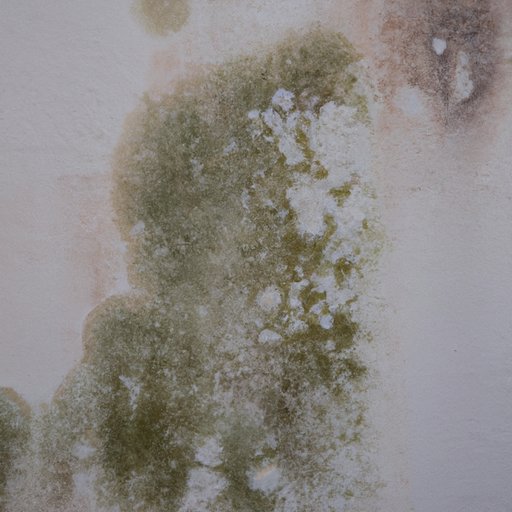I. Introduction
Mold growth is a common problem that many homeowners face, especially in areas with high humidity levels or water damage. Not only does mold on walls look unsightly, but it can also pose a health risk and cause structural damage to your home. This article will provide a step-by-step guide to cleaning mold on walls, natural remedies to remove mold, tips for preventing and treating mold growth, as well as common causes of mold. We will also highlight the dangers of mold and why it is important to address it promptly.
II. Step-by-Step Guide to Cleaning Mold on Walls
Before starting to clean mold on walls, it is important to gather the right materials to protect yourself and your surroundings. You will need gloves, goggles, a mask, a bucket, a spray bottle, a sponge or scrub brush, and a cleaning solution. We recommend using a solution of one-part bleach to three-parts water for non-porous surfaces like bathroom tiles and walls. For porous surfaces like drywall, use vinegar instead.
Next, ensure that your room is well-ventilated by opening windows or using a fan. We also recommend covering any nearby furniture or belongings with plastic or towels to prevent any potential damage. While working, avoid disturbing the mold or creating dust by wetting the mold with your cleaner before scrubbing. When you’re done, let the area dry completely and dispose of any contaminated materials properly.
III. Natural Remedies to Remove Mold on Walls
Apart from bleach and vinegar, there are several natural remedies that you can use to clean mold on walls. Baking soda mixed with water can be effective for cleaning non-porous surfaces. Tea tree oil diluted with water can also be useful due to its anti-fungal properties. As these remedies are natural, they are typically safer to use around children and pets.
When using these remedies, it is important to note the proper concentration for effective cleaning. For example, you could mix two tablespoons of tea tree oil with two cups of water in a spray bottle. After spraying the mixture, let it sit for about an hour before wiping it down with a damp cloth.
IV. Treating Mold on Walls and Preventing it from Coming Back
The best way to prevent mold growth is by controlling the humidity levels in your home, especially in areas like bathrooms and kitchens. You can do this by using a dehumidifier or air conditioning system. Quick action is also important in addressing any leaks or water damage, as mold can start to grow within 24 to 48 hours of water exposure.
If you already have mold on your walls, you can try several methods for treating it depending on the severity of the issue. If the mold covers a small area, like less than 10 square feet, you may be able to clean it yourself using the step-by-step guide mentioned earlier. For larger areas or severe cases, we recommend hiring a professional to ensure proper removal and prevent further damage to your home.
V. Common Causes of Mold on Walls and How to Address Them
The most common causes of mold on walls are humidity and water damage. If you live in an area with high humidity levels, ensure that ventilation systems are in place in areas like bathrooms and kitchens. Regular use of exhaust fans or opening windows can help reduce moisture levels in these areas.
Water damage can also lead to mold growth, so inspect areas like basements, attics, and crawl spaces for leaks or damage from rain or flooding. If you find any leaks, fix them immediately to prevent the onset of mold growth. Poor ventilation and insulation in your home can also create a favorable environment for mold growth. Ensure that your home is properly ventilated and insulated for improved air quality and comfort.
VI. The Dangers of Mold on Walls and Why You Need to Remove It
Aside from its unsightly appearance, mold on walls poses potential health risks to people when inhaled. Mold can cause allergy symptoms, respiratory problems, skin irritations, and even more severe health issues when left untreated. Furthermore, its rotting effects can destroy areas of your home that the mold has infested, ultimately creating costly repairs.
Thus, it is important to act quickly when you spot mold growing on your walls and to take appropriate steps to remove it safely and effectively.
VII. Conclusion
Removing mold on walls may seem like a daunting task, but with the use of the right materials and techniques, it can be carried out with ease. By using the step-by-step guide to cleaning mold, natural remedies, and prevention tips, you can get rid of mold on walls and maintain a healthy living space. Remember that quick action is essential in addressing mold growth and hiring a professional is always recommended for more severe cases. By being vigilant and proactive in monitoring and cleaning mold, you can keep your home and loved ones safe.
